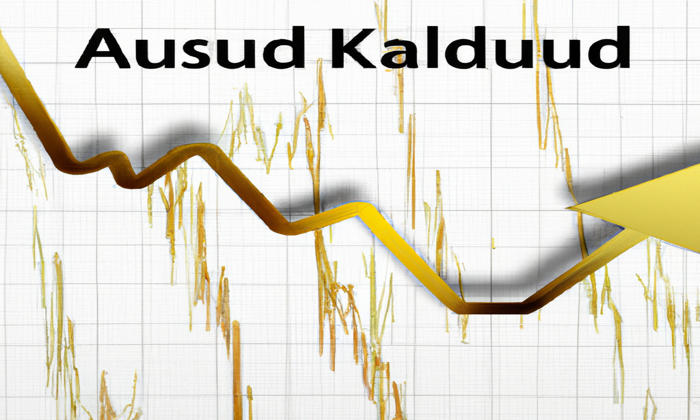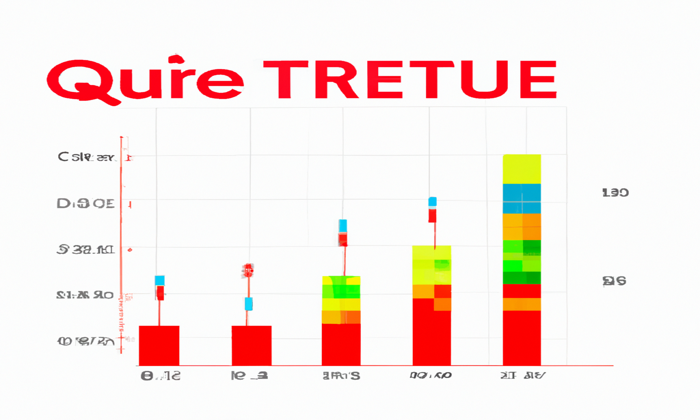As we delve into the Bitcoin market outlook, emerging trends suggest an intriguing yet cautious scenario for cryptocurrency investors. Recently, the Bitcoin price forecast has been closely tied to macroeconomic variables, particularly the impact of low U.S. inflation rates and the looming threat of increased tariffs from the Trump administration. Investors are already responding to market fluctuations, as Bitcoin recently dipped below $80,000, raising questions about its near-term viability. Alongside this decline analysis, signals of recovery remain in the charts, as some reports indicate major holders are accumulating Bitcoin, despite a general downturn. With the potential tariff impacts weighing heavily on market sentiment, understanding these dynamics is essential for anyone considering cryptocurrency investments in the coming months.
In examining the future prospects for Bitcoin, a comprehensive outlook is essential to grasp the complexities of this digital currency. Many analysts are focusing on distinct sectors that affect the cryptocurrency landscape, such as tariff negotiations and inflation rates. The recent fluctuations in Bitcoin’s value, notably falling below key price points, highlight the need for investors to assess both market reactions and potential recovery signs. As traders navigate these waters, understanding broader economic indicators like consumer price indexes and their implications on Bitcoin’s performance can illuminate pathways for investment. Thus, analyzing the interplay of these factors will provide valuable insights into whether Bitcoin can regain its bullish momentum amid current uncertainties.
Bitcoin Market Outlook: Uncertainties and Opportunities
The Bitcoin market outlook for the upcoming weeks appears precarious as investors react to the fluctuating economic indicators and geopolitical tensions. Recent CPI data revealing a decrease in inflation has not translated into positive sentiment for cryptocurrency investments. Instead, the market seems overshadowed by concerns over potential tariff increases and a looming trade war with China. As Bitcoin dipped below $80,000, traders are left questioning whether this decline signifies a broader bearish trend or presents a strategic buying opportunity amidst the uncertainty.
Despite the pessimistic forecasts, some analysts suggest that this could be a moment to reassess Bitcoin’s resilience. Technical indicators hint at a mixed picture, with Bitcoin showing strength in volatility compared to traditional equities. As the crypto community observes potential accumulation by larger investors, it raises speculation about a possible recovery phase if specific price levels are maintained. Therefore, while challenges remain, the evolving Bitcoin market outlook also provides avenues for savvy investors to capitalize on fluctuations.
Bitcoin Price Forecast: Key Price Levels to Watch
Given recent market activity, the Bitcoin price forecast remains cautious yet hopeful for keen investors. Watching critical support levels becomes essential in this environment, particularly as Bitcoin tests the crucial $80,000 threshold. Analysts at Glassnode highlight the importance of maintaining this level to avoid testing lower support zones around $76,000 and beyond. If Bitcoin holds above these areas, it could signal a chance for recovery, enticing investors to reconsider their positions amid the decreasing capital inflows seen in the market.
The situation is further complicated by external factors, including the fluctuating commodities market influenced by tariff discussions. Therefore, anyone invested in Bitcoin should remain vigilant and ready to react to real-time changes. If Bitcoin exceeds $81,000, potential breakout targets could be around $86,000, and even further rallies towards $94,000 cannot be dismissed. By understanding these price forecasts and taking an analytical approach, investors can better position themselves for upcoming market shifts.
Bitcoin Decline Analysis: Factors Impacting the Market
An essential part of understanding Bitcoin’s current situation is conducting a thorough Bitcoin decline analysis. The recent drop below the $80,000 mark correlates with the uncertainty surrounding U.S. economic policies and international trade relations. Investors are particularly anxious about President Trump’s potential for further tariffs, which could strain market confidence and stifle growth for risk assets, including cryptocurrencies. As external factors dominate the narrative, traders must be keenly aware of how macroeconomic developments affect their Bitcoin holdings.
Additionally, the significant reduction of capital inflows into Bitcoin indicates that investor interest may be waning amid these uncertainties. Reports of more than a 90% drop from the peak suggest a cautious approach from market participants, heightening the need for a diligent decline analysis. However, given that some larger players are accumulating, a nuanced view is required, recognizing that while Bitcoin may be facing challenges, it is simultaneously being positioned for long-term stability by significant investors.
Tariff Impact on Bitcoin and Cryptocurrency Investments
The tariff impact on Bitcoin and overall cryptocurrency investments cannot be overstated, particularly given the intricate web of economic interdependencies. President Trump’s recent trade policies, which included a 10% reciprocal tariff, have sparked fears of escalating costs for goods and services. This could ultimately lead to higher inflation, creating an environment less favorable for risk assets like Bitcoin. Consequently, the crypto market, already teetering on a precarious edge, is vulnerable to volatility influenced by these tariffs.
Investors must navigate this tumultuous landscape by assessing how tariff-related news affects market dynamics. The interplay between trade relations and Bitcoin valuations forms a critical component of any cryptocurrency investment strategy. As the situation evolves, staying informed about potential tariff changes will be pivotal for making informed decisions regarding Bitcoin acquisitions or sales.
Signs of Bitcoin Recovery: Analyzing Market Sentiment
In the midst of the current market turbulence, several signs of Bitcoin recovery have emerged, presenting an intriguing perspective for potential investors. Some analysts perceive a double bottom pattern forming on the charts, a classic bullish indicator that suggests a trend reversal may be on the horizon. With Bitcoin currently trading above the pivotal $81,000 level and bouncing back from recent lows, there could be an opportunity for a resurgence towards higher targets, around $86,000 and possibly even $94,000 as bullish momentum builds.
However, to fully capitalize on these signs of recovery, investors must consider the broader market conditions and external pressures, particularly regarding the U.S.-China trade relationship. Positive sentiment is not guaranteed, especially if tariff disputes reignite fears among traders. Nevertheless, the increasing interest from larger investors and the presence of accumulating ‘whale’ wallets highlight the potential for a renewed bullish stance amidst the current downturn.
Understanding Bitcoin’s Volatility in Current Markets
Understanding Bitcoin’s volatility is crucial for any investor navigating today’s cryptocurrency landscape. Bitcoin’s seven-day realized volatility has spiked recently, showcasing a sharp increase as sentiment oscillates with external economic indicators. While this presents challenges, it also exemplifies Bitcoin’s potential evolution into a low-beta hedge against traditional equities, especially given how it has responded compared to the S&P 500’s more erratic movements. As traditional markets face heightened uncertainty, Bitcoin’s relative stability could attract investors seeking refuge.
Moreover, this volatility offers traders multiple entry and exit points, allowing them to capitalize on temporary price shifts. The key for investors lies in embracing a strategic approach and leveraging technical analysis tools to mitigate risks associated with Bitcoin’s price swings. By identifying patterns and maintaining awareness of macro trends, crypto enthusiasts can position themselves for success even in a fluctuating market environment.
Investing in Bitcoin: Strategies for Uncertain Times
Exploring effective strategies for investing in Bitcoin during uncertain times can provide a roadmap for both novice and seasoned traders. Given the ongoing fluctuations influenced by external factors such as inflation and tariff discussions, a cautious yet proactive approach to investing is essential. Dollar-cost averaging, for instance, allows investors to spread their capital over time rather than committing a lump sum, thus mitigating the risk associated with volatile price movements.
Likewise, maintaining diversified portfolios that include a range of cryptocurrencies can help reduce exposure to Bitcoin’s steep price swings. As the market remains susceptible to changes in sentiment and news cycles, adaptive strategies can not only protect investments but also capitalize on unexpected bullish movements as larger players accumulate Bitcoin amidst market uncertainty.
Future of Bitcoin: Regulatory Influences and Market Adaptation
The future of Bitcoin will inevitably be shaped by increasing regulatory influences and market adaptation strategies. As governments around the globe grapple with the implications of digital currencies, potential regulations may significantly alter the landscape for Bitcoin and other cryptocurrencies. Investors must remain vigilant, paying attention to regulatory developments and how they could impact market sentiment and investor confidence.
Adaptation will also play a crucial role in shaping Bitcoin’s trajectory. As traditional financial institutions start to engage more with cryptocurrencies, understanding how these entities will interact with Bitcoin adds an extra layer of complexity to investment strategies. The volte-face in regulatory frameworks could either spur growth or create newfound challenges, thus emphasizing the importance for Bitcoin investors to stay informed and adaptable in the pursuit of long-term profitability.
Frequently Asked Questions
What is the current Bitcoin market outlook following recent U.S. inflation data?
The Bitcoin market outlook appears cautious due to recent unexpectedly low U.S. inflation data, raising concerns about potential increases in tariffs by President Trump. Bitcoin recently dropped below $80,000, down 1.6% over the last 24 hours, despite somewhat favorable CPI reports. This indicates a complex interplay between inflation, tariff threats, and investor sentiment.
How do recent economic indicators affect Bitcoin price forecasts?
Economic indicators, particularly inflation data and Federal Reserve policy, significantly impact Bitcoin price forecasts. Lower inflation typically reduces the urgency for rate hikes, which can be beneficial for cryptocurrencies. However, despite positive CPI data, the Bitcoin price has experienced declines, suggesting that geopolitical factors and trade tensions currently dominate market sentiment.
Can we analyze the factors contributing to Bitcoin’s recent decline?
Yes, Bitcoin’s recent decline can be attributed to various factors, including tariff threats from the U.S. and retaliatory measures from China, which have spurred market uncertainty. Moreover, significant slowing of capital inflows into Bitcoin—down over 90%—indicates waning investor confidence amidst these geopolitical tensions.
What role do tariffs and trade tensions play in Bitcoin’s market outlook?
Tariffs and trade tensions play a critical role in Bitcoin’s market outlook as they can affect investor confidence and broader market performance. The recent imposition of tariffs has created volatility, leading to fears of a prolonged trade war that could adversely impact cryptocurrency markets, including Bitcoin.
Are there any signs of recovery in the Bitcoin market?
Yes, some analysts are identifying signs of potential recovery in the Bitcoin market, particularly following the recent completion of a double bottom pattern, which is often viewed as a bullish indicator. If Bitcoin can maintain above $81,000 and close weekly above $86,000, there could be a push towards higher targets, signaling a bullish reversal.
How does Bitcoin compare in volatility to traditional markets currently?
Bitcoin currently exhibits lower volatility compared to traditional markets like the S&P 500. With its seven-day realized volatility at 83%, Bitcoin is evolving into a low-beta asset, suggesting that it might serve as a hedge against the more volatile equities market. This evolving dynamic may influence future Bitcoin market outlook.
What support levels should Bitcoin investors monitor amid current market uncertainties?
Investors should closely monitor key support levels for Bitcoin amid current uncertainties. If Bitcoin fails to hold the $80,000 level, analysts indicate potential declines towards the 356-day exponential moving average at $76,000. Further significant support levels include the active realized price at $71,000 and the true market mean at around $65,000.
How are larger investors reacting to the current Bitcoin market outlook?
Larger investors are actively positioning themselves as they see potential in the current Bitcoin market outlook. Recent data indicates an uptick in large ‘shark’ wallets acquiring Bitcoin, with substantial accumulation observed. This activity suggests confidence among major holders who may be looking to capitalize on long-term investment opportunities, despite short-term market challenges.
What alternatives are there for investing in cryptocurrencies given the current Bitcoin market outlook?
Given the current Bitcoin market outlook, potential alternatives for cryptocurrency investment include diversifying into other altcoins that may not be as affected by current market tensions or exploring opportunities in decentralized finance (DeFi) platforms. Investors might also consider engaging in dollar-cost averaging to mitigate risks during price fluctuations.
What are the potential outcomes for the Bitcoin market if tariffs escalate further?
If tariffs escalate further, it could lead to increased market volatility and further declines in Bitcoin’s price. Ongoing trade tensions may diminish investor confidence, potentially impacting capital inflows into Bitcoin. Conversely, any resolution or de-escalation in tariffs could foster recovery and growth in the Bitcoin market.
| Key Point | Details |
|---|---|
| Bitcoin Price Decline | Bitcoin fell below $80,000 and is down about 1.6% over 24 hours. |
| U.S. Inflation Data | CPI decreased to 2.4%, affecting market sentiment despite lower inflation typically benefiting risk assets. |
| Trump’s Tariff Policies | President Trump’s announcement of a 90-day halt on tariffs initially boosted Bitcoin but fears arose after China’s retaliation with tariffs. |
| Investor Capital Flows | Capital inflows into Bitcoin have decreased over 90% this year, with analysts noting waning investor interest. |
| Support Levels | Key support levels are at $80k, $76k (ema), $71k (realized price), and $65k (market mean). Below $80k indicates potential further decline. |
| Volatility Comparison | Bitcoin’s volatility has doubled but remains lower than the S&P 500, indicating possible stabilization. |
| Bullish Indicators | Emerging ‘shark’ wallets signify accumulation; classic double bottom pattern suggests potential bullish trend reversal. |
| Future Outlook | Potential breakout targets for Bitcoin are at $86k and $94k, depending on resolution of U.S.-China trade tensions. |
Summary
The Bitcoin market outlook remains precarious as recent trade policies and macroeconomic factors raise concerns. Despite falling below $80,000, signs of swing opportunities exist. Historical price levels and the responses of major players could shape Bitcoin’s trajectory in the coming weeks. Traders should remain alert to price fluctuations around established resistance and support zones as the U.S.-China tariff situation evolves.
The Bitcoin market outlook appears increasingly complex as economic shifts and geopolitical tensions unfold. Recent data indicating a decline in U.S. inflation has triggered fears of escalating tariffs under President Trump, pressuring the cryptocurrency landscape profoundly. On Friday, Bitcoin’s price dipped below $80,000, reflecting a 1.6% decline within 24 hours, despite a generally lower Consumer Price Index that analysts hoped would bolster cryptocurrency investments. This bearish trend is complemented by a significant decrease in inflows, which have plummeted over 90% this year, raising concerns about Bitcoin’s long-term viability. As investors navigate these turbulent times, understanding the nuanced interplay of economic indicators and tariff impacts on Bitcoin will be crucial for forecasting its recovery signs amidst a broader market decline analysis.
Examining the future of Bitcoin involves grasping intricate dynamics that shape its value, especially in light of current macroeconomic factors. The cryptocurrency sector finds itself at a crossroads, as analysts debate the implications of trade disputes and financial policies on digital asset performance. With Bitcoin’s recent price adjustments presenting a critical junction, many investors are left wondering if this signals a decline or a potential turnaround in sentiment. The discussion often extends to broader cryptocurrency investment strategies and the critical analysis of tariff impacts that could sway market trends. As Bitcoin teeters between support levels, identifying recovery indicators amidst the ongoing economic fluctuations becomes paramount.















